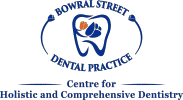Dental implants are a dental treatment option that is used to replace missing or severely damaged teeth. The implant, which is a metal screw, is inserted into the jawbone, which acts like an anchor for an artificial tooth (implant crown). Over the next few months, the jawbone grows around the implant and holds the screw securely in place.
It is virtually impossible to tell the difference between a dental implant and your natural teeth, which is why it remains a popular treatment option, especially with less invasive treatment options now being available, which makes it possible for keyhole surgery to be used instead of more invasive surgery.
Treatment Procedure
The dental implant procedure usually includes the following steps:
- Initial consultation: The dentist will inspect your mouth and take photos, x-rays and scans as needed. These photos will ensure that dental implants are the right treatment option for you and that you will have the best possible outcome.
- Implant surgery: With advances in dental technology, the dental implant procedure is now less invasive than ever. Digital Guided Implant software allows for keyhole surgery to be used instead of the traditional invasive surgery that is more painful and takes longer to heal.
- Jawbone grows to form a secure foundation: The implant is left in your mouth for up to six months until the jawbone grows around it and gives it a secure foundation. During this time, a temporary tooth may be worn.
- The artificial tooth is inserted: Once your jawbone and implant are stable, your dentist will make a mould of your mouth and create an artificial tooth which is then screwed or cemented into place.
Who Can Get a Dental Implant?
People who are eligible for a dental implant include:
- People who have a missing tooth/teeth
- People who don’t have a history of gum disease
- People who have a healthy jaw bone (dense bone tissue)
- People who don’t smoke
What Are the Benefits of Dental Implants?
The benefits of dental implants include:
- Restored confidence: By having your missing tooth/teeth replaced it gives you a renewed sense of confidence as you proudly flaunt your new smile.
- Eating your favourite foods: You no longer have to dread or avoid eating hard foods or food that gets stuck in your missing teeth. All foods can now be enjoyed equally.
- Preventing long-term issues: Over time, missing teeth can cause the jaw bone to weaken and can cause your remaining teeth to become misaligned.
- Durable: The dental implants are made from titanium and other strong metals, making them incredibly durable. In fact, if it’s taken care of properly (regular dental appointments and brushing and flossing), the implant(s) can last for a lifetime.
- Convenient: Once an implant has been inserted, it stays there and does not need to be removed while eating or cleaning your teeth.
- Comfortable: Once it is inserted and bonded with your jawbone, the dental implant functions just like your natural teeth.
What Are the Different Types of Dental Implants?
- Single Dental Implant: A dental implant that replaces a single tooth.
- Fixed Dental Implant Bridge: This allows for multiple teeth to be replaced. An implant bridge is used, which joins two or more implants are inserted by a bridge.
- All-On-4: An entire arch is replaced.
- Endosseous Implants: The most common solution. Implants are inserted directly into the jaw bone.
- Subsperiosteal Implants: It involves a metal frame or pin that is inserted through the jawbone and into the gum. The implants are inserted on top of the jaw bone and underneath the gum line.
Using the Latest Technology at Bowral Street Dental Practice
At Bowral Street Dental Practice, we use the latest technology, including Digital Guided Implants, Key Hole Surgery, and Digital Smile Design (DSD), to make dental treatments as quick and painless as possible, so getting a dental implant no longer seems as daunting as it once was.
Digital Guided Implants
Digital Guided Implants uses advanced software and a patient’s 3D mouth scans to place a dental implant into the mouth with incredible precision.
The benefits of Digital Guided Implants include:
- Improved accuracy: By using software, dentists can clearly plan out the positioning of the implant in the mouth.
- Less chance of complications: Knowing exactly where the implant will go means that there’s less chance of any complications or damage to the surrounding tissue or jawbone.
- Shorter treatment time: The whole procedure takes less time.
Key Hole Surgery
Key Hole Surgery for dental implants uses CT technology and 3D imaging to place a dental implant in the mouth with minimal fuss or pain.
The benefits of Key Hole Surgery include:
- Less invasive: Only a tiny incision is made in the mouth to insert the implant, rather than cutting into the gum/jawbone.
- Less painful: Key hole surgery is less painful as there is no need for stitches.
- Faster recovery time: The recovery time is much faster as only a small incision is made.
Digital Smile Design (DSD)
Digital Smile Design (DSD) uses photos, scans and software to create a custom-made dental treatment that will give patients the smile of their dreams.
The benefits of Digital Smile Design (DSD) includes:
- Custom-made treatments: Not every mouth or set of teeth is the same, so DSD allows for a perfect treatment plan to be created especially for you.
- Preview your smile: Before any work is done, you get to see what your mouth/teeth will look like after the treatment is completed.
At Bowral Street Dental Practice, we’re proud to have a comprehensive and holistic approach to dental care. We’re very aware that dental visits can be stressful for many, which is why we make your comfort our top priority. To find out more about Dental Implants and our other dental treatments, please contact us at (02) 4861 6576 or visit our website: https://bowralstreetdentalpractice.com.au/

